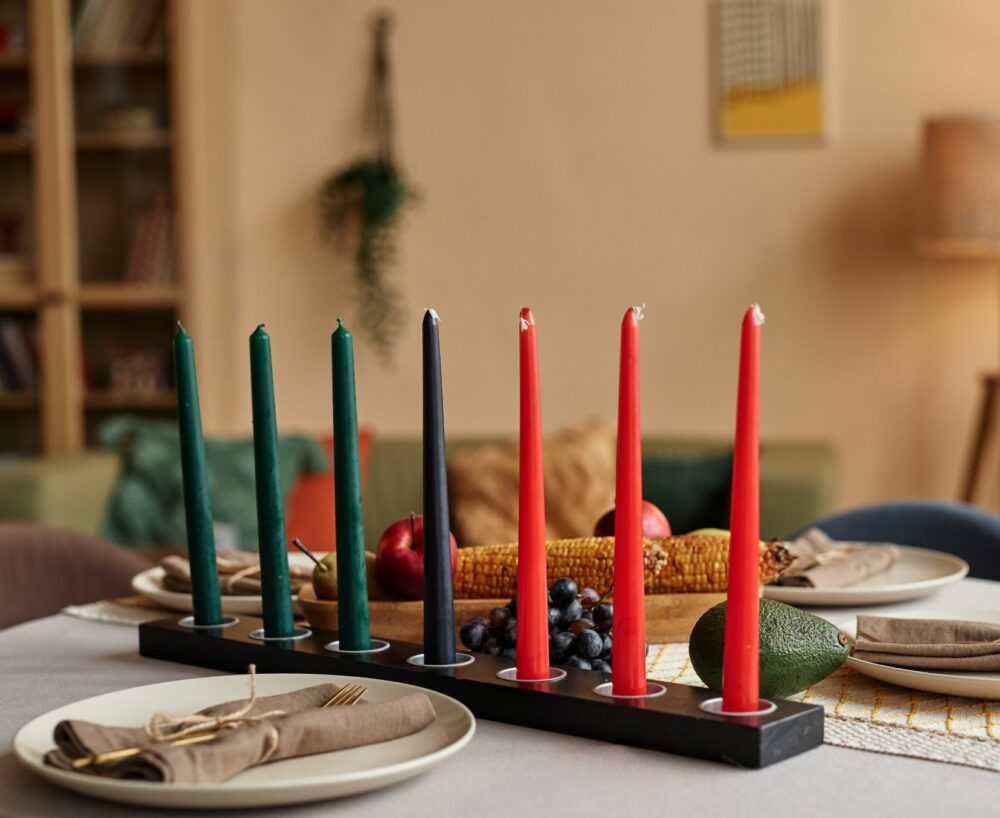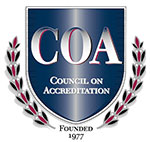PROGRAMS
GET INVOLVED
SUPPORT OUR MISSION

Kwanzaa was created in 1966 by Maulana Ron Karenga. Maulana, a Black nationalist who later became a college professor, created Kwanzaa as of way of uniting and empowering the African American community in the aftermath of the deadly Watts Rebellion. He took the name Kwanzaa from the Swahili phrase “matunda ya kwanza” which means first fruits. His goal had 3 points:
1. Reaffirm and restore African heritage and culture
2. To introduce and reinforce the Nguzo Saba or the Seven Principle
3. To serve as nationally celebrated communal and non-heroic holiday
It is based on African Harvest Festival traditions from various parts of West and Southeast Africa. In 2015 a survey concluded that approximately 6 million Americans celebrates the holiday.
Kwanzaa is a time of learning, family and celebration. It is celebrated from December 26 through Jan 1. Although Kwanzaa was made for African Americans it celebrates values that all humans should embrace, such as creativity, unity, purpose and faith.
Kwanzaa is not a religious holiday but a cultural one. The seven days of Kwanzaa centers around seven principles: Umoja – unity, Kujichagulia – self-determination, Ujima – collective work and responsibility, Ujamaa – cooperative economics, Nia – purpose, Kuumba – creativity, and Imani – faith. Kwanzaa also has seven symbols – mazao (crops), mkeka – (mat), kinara (candleholder), muhindi (corn), kikombe cha umoja (unity cup), zawadi (gifts) and mishumaa saba (seven candles) – that are traditionally arranged on a table. The three red candles represent the struggle, three green candles represent the land of hope for the future, and one black candle represent people of African descent.
Umoja (unity): to strive for and maintain unity in the family, community, nation, and race.
Kujichagulia (self-determination): to define ourselves, name ourselves, create for ourselves and speak for ourselves.
Ujima (collective work and responsibility): to build and maintain our community together, making the community problems our problems and solve them together.
Ujamaa (cooperative economics): to build and maintain our own stores, shops, and other businesses and to profit from them together.
Nia (purpose): to make our collective vocation the building and developing of our community in order to restore our people to their traditional greatness.
Kuumba (creativity): to do always as much as we can to leave our community more beautiful and beneficial than we inherited it.
Imani (faith): to believe with all our hearts in our people and the righteousness and victory of our struggle.
Gifts are generally exchanged during these seven days, however to keep from commercialization, the gifts are usually handmade
Since Kwanzaa is a cultural holiday rather than a religious one, it can be celebrated alongside Christmas/Hanukkah or on its own. The Kwanzaa Karamu feast always takes place on New Year’s Eve. The Kwanzaa feast is a very special event that brings everyone closer to their African roots. It is traditionally held on December 31st and is a communal and cooperative effort. Decorate the place where the feast will be held in a red, green, and black scheme. A large Kwanzaa setting should dominate the room where the feast will be held. A large Mkeka should be placed in the center of the floor where the food is placed creatively and made accessible to all to serve themselves. Before and during the feast, an informative and entertaining program should be presented.


